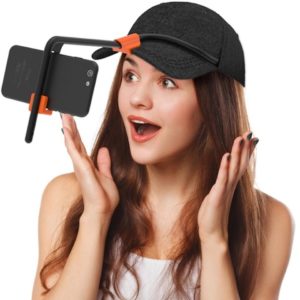The Inevitability Of Augmented Reality HMDs

 It is strange to see the old movies and TV shows where characters use landline phones, especially pay phones. It reminds us that so much more than fashion has changed. Time and space are different.
It is strange to see the old movies and TV shows where characters use landline phones, especially pay phones. It reminds us that so much more than fashion has changed. Time and space are different.
In eight generations we have gone from cavemen to star-traveling magicians. In the context of the 125,000 generations that came before us, that is astounding. It is the ultimate hockey stick.
We are constantly shifting between the world in our hands and the physical world. Tens of thousands of people die every year because of this incredibly bad form factor, and the need to change it is urgent. It took 15 years to dig this hole, and it will take 15 years to dig out, but when we do, it's going to be a very different world because augmentation is happening at many other levels, AI, the blockchain, cloud computing, are also rapidly changing computing. And then there are the unintended consequences of our greatest inventions, like Facebook, which may better connect us, but also make us less free.
Pattie Maes of the Media Lab really influenced my thinking about AR and how this tool is going change humankind. Well known for her compelling TED talks, at the “AR in Action” conference at MIT January 17, 2017, she gave a mesmerizing big picture presentation on the state of modern life: living simultaneously, imperfectly and superficially in the real and digital worlds, multitasking, continually interrupting ourselves by checking our smartphones 100+ times a day.
“Tech has become part of us,” she said, “and we all know there is no going back. Instead, we need to make our integration with technology more seamless. In the short term, our technology is making us less mindful and attentive, but in the long term, it will make us much, much better. Better learners, better workers, better able to reach our potential. We will become augmented. Cyborgs.”
The goal is to get this information into the brain. Right now, the eyes and the ears are the only ways into the brain. “Computing interfaces will become more and more invisible to the user/wearer" says Will Schumaker, a postdoctoral scholar at Stanford University whose focus is optics. "But going beyond HMDs will be tricky and require quantum leaps in optics or biotech, which might take some time.”
Neuralink Corp. is a startup co-founded earlier this year by billionaire Elon Musk, who runs Tesla and Space X. Musk disclosed he has invested 27M in Neuralink, a company that implants electrodes into the brain in order to create a "neural lace", the ultimate man-machine interface. It may be decades away, but it's not as crazy as it sounds.
See the full story here: https://www.forbes.com/sites/charliefink/2017/11/13/the-inevitability-of-augmented-reality-hmds/#40416cff42f8
Pages
- About Philip Lelyveld
- Mark and Addie Lelyveld Biographies
- Presentations and articles
- Tufts Alumni Bio